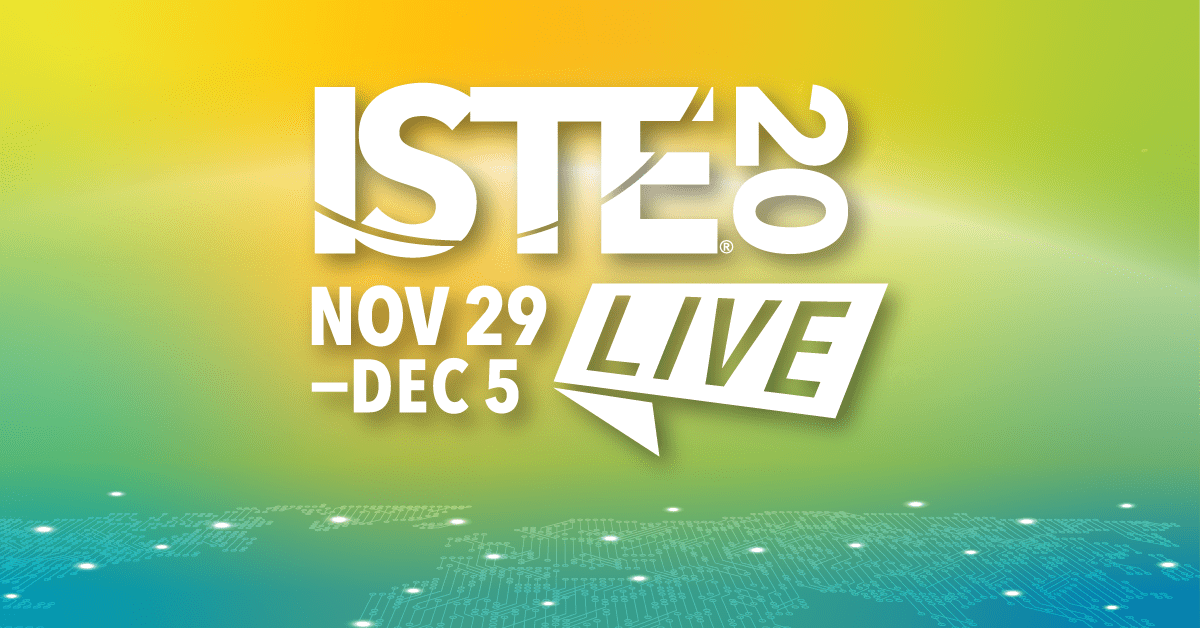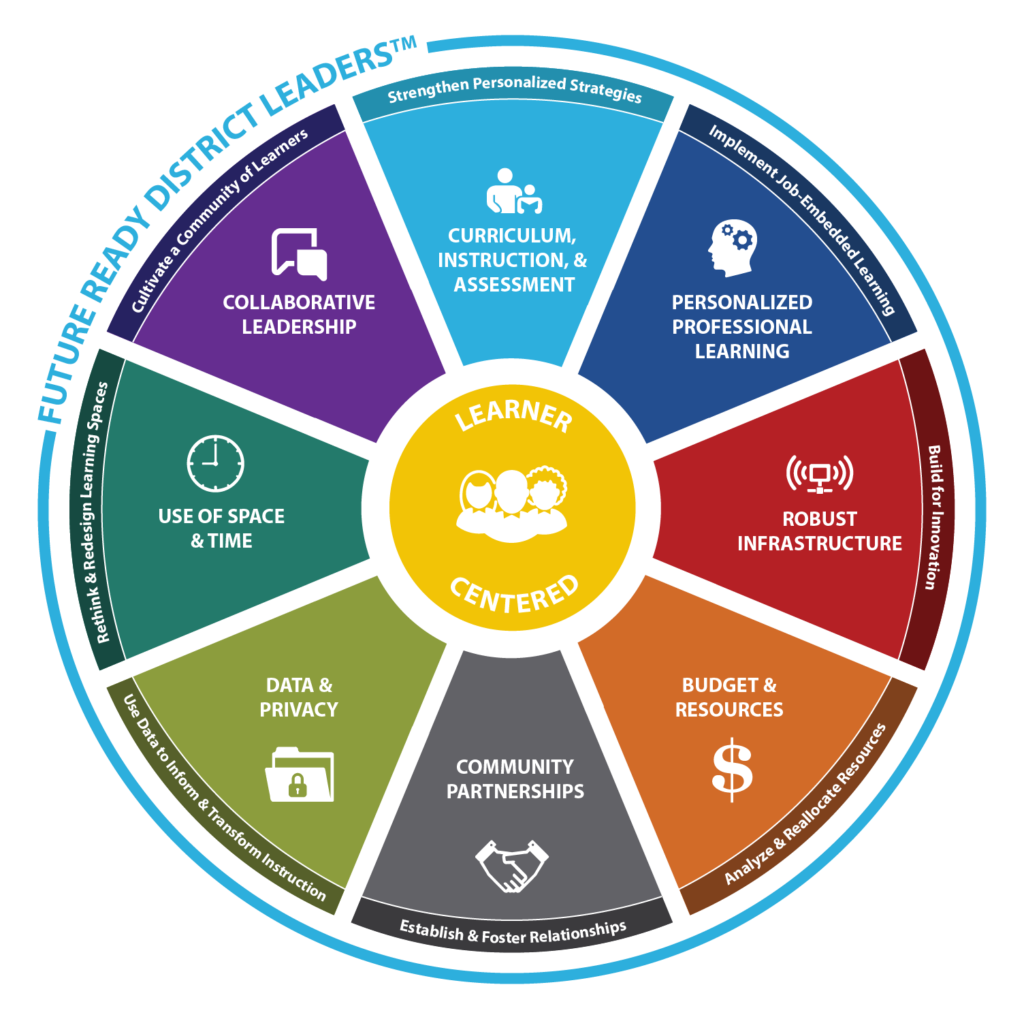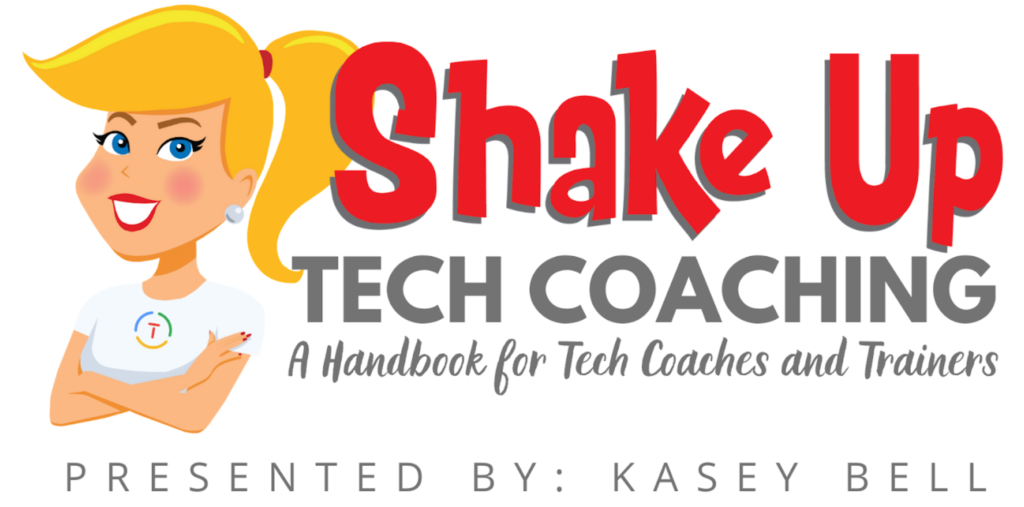Coaching and Mentoring

*This post has been written as part of my professional growth plan through my #ISTE20 scholarship.
Building Buy-in: Helping Faculty See the Value of Classroom Technology
Presenters: Nicole May, Caitlin Donovan
Overview: “Learn about one school’s strategies for creating buy-in for using technology in the classroom. Explore how the strategies encourage thoughtful use of technology in schools.“
Main Takeaways
- Meet teachers where they are and provide an accessible entry point that is relevant and meaningful to them
- take into account current understanding/comfort, teaching style, teaching goals, available resources, subject area, age/stage of students
- build relationships
- Highlight progress and don’t punish failures
- Share success stories regularly (newsletters, conversations, faculty meetings, etc)
- Do not include tech integration into formal observations
- Diversify training opportunities
- All different levels of PD
- 1:to:1 training where possible with a preference of a meaningful follow-up in the classroom during integration
- Identify and support a point-person in each school building or department to be a liasion and support if the tech team is not immediately available
- Engage the students and help them guide teachers
- Students spread the word and teachers can learn with students
- Get feedback from students on what is working, or not, and why
- Pandemic-related tech growth
- Provide resources while maintaining balance to prevent staff from being overwhelmed
- Encourage balance away from screens as well
- Offer multiple versions of resources: video, written, screen-shots, etc
Further Resources
Empowering EdTech: Building Capacity at Your School Site
Presenters: Yasmin Vega, Jonathan Carrasco, Ashley Jordan, Ahmad Mallard, Kristen Mitchell, & Rohya Purdhomme
Overview: “Explore a model for using ISTE resources to identify your site’s instructional technology needs, and establish practices that help to build capacity and empower all stakeholders to be leaders in instructional technology.“
Main Takeaways
- Shift from staff & students being passive users of technology to higher-level integration of technology supported by clearly identified goals
- Identify goals that are practical and meaningful to the staff and snowball off of their enthusiasm
- Who can you build your team with?
- who is enthusiastic to learn more?
- who has not had an opportunity to lead in this area before?
- who is already part of the team?
- What foundational knowledge around instructional technology does your school already have?
- certifications?
- practical understanding?
- How might you think creatively with your scheduling to accommodate new practices?
- timetabling?
- allocation of resources within a building?
- flexibility in planning?
- How can you lead your team by example?
- are you able to be in classrooms with your team?
- how do you deliver PD?
Further Resources
- Presentation Notes
- Empowered Leaders: Building Capacity at Samuel Gompers Middle School (article)
- Building Capacity: Questions to Consider (infographic)
- Transformation look-fors and ask-abouts for the classroom and the system (ISTE poster)
- Empowered Leaders (ISTE article)
YouTube Tutorials: The New PD in the Era of Distance Learning
Presenters: Samuel Kary
Overview: “In this session, attendees will explore why YouTube has emerged as a go-to for teachers to learn how to teach with technology in the era of distance learning. We’ll discuss what we can extrapolate from the high levels of engagement with video-based learning to improve teacher professional development.“
Main Takeaways
- YouTube videos are accessible as even teachers who sometimes consider themselves “non-techy” are familiar with YouTube and watch videos on the platform for personal uses
- Powerful learning can be shared in a short time-frame (10-15mins)
- YouTube has tools built in to make content more accessible:
- Play & pause at user-pace
- Learning anywhere
- Captions
- Time-stamping
- Multi-media
- Searchable
- Conversational learning through comments
- PD for Teachers:
- Adult-learning should adhere to the same principles of effective student learning
- Direct, concise, and explicit instruction
- Tech that is easily accessible to learn is more readily integrated into classrooms
- YouTube as a PD Platform
- Free and removes the cost-barrier of PD
- Underutilized by teachers
- Planning, recording and editing is important in the same way solid lesson-design is important
- It does take time to create high-quality content
- Not everyone should be a content-creator but you can support creators for teachers
Further Resources
- The following YouTube channels model how to use YouTube for PD and can be a great resource for staff:
The Modern Tech Team
This session was divided into two sections:
- It’s Time to Develop a Districtwide Technology Strategic Plan
- Every Member as Tech Support, Coach, IT, Infrastructure
Presenters: Poway Unified Technology & Innovation, Emily Hendricks & Bill Selak
Overview: “We expect teachers to play multiple roles: leader, facilitator, designer, collaborator. It’s time that tech departments adopt a similar mindset. Learn how the entire tech team at Hillbrook School shares responsibilities for schoolwide technology support, from visionary leadership to digital age learning environments and PD.“

Main Takeaways
- Developed a 3-year strategic plan to take into account the fast-changing nature of technology
- Took into account stakeholder interests (community members, students, staff, outside experts, administrators, etc)
- All data and process was transparent through a website
- Driven by Future Ready District Leaders framework
- All stakeholders were provided with information on tech integration so that they were prepared with common language and foundational understanding during the decision-making process
- All stakeholders had an opportunity to work in small-groups within each component of the Framework and provide feedback
- Stakeholder feedback was summarized into a DRAFT technology framework
- Traditional Tech Teams include buckets: help desks, networks, coaches, admins
- Mindset shift to focus on the people and not the devices
- creation, not consumption
- purposeful and sustainable planning
- teacher & student agency
- Modern Tech Teams have flexible roles
- Implement resources and tools that build capacity of all users
- Asynchronous resources
Further Resources
- Future Ready District Leaders
- Presentation Notes
- My iPad Fix (website to guide student troubleshooting)
- Teaching with Technology (website)
Shake Up Coaching: A handbook for tech coaches & trainers

Presenters: Kasey Bell
Overview: “Being a tech coach has never been easy, but you just became the most needed person in school! Let’s take a closer look at best practices, including virtual and blended PD, tips and tools to help you stay organized, scheduled, and make an impact!“
Main Takeaways
- Change Agents
- Our #1 job is to build relationships
- Always assume a positive intention; you’re supporting not fixing
- Teachers are professionals; not your students
- Give me than you get
- Allow yourself to fail in public (model flexibility)
- Be a servant leader
- Be visible and accessible
- Fill in where you can to lighten teacher load
- Create & support a shared vision (large-scale in the division/school and small-scale for teachers)
- “Work together with common purpose and foresight to visualize the full potential of technology to transform teaching & learning” – ISTE Standards for Coaches
- Implement a coaching cycle
- Impact Cycle by Jim Knight (also on episode 50 of the Shake Up Learning Podcast)
- “and what else?”
- Celebrate teachers as front-line leaders
- Our #1 job is to build relationships
- Connected Learner
- Social media groups
- Use of hashtags (#educoach, #techcoach)
- Collaborator
- Co-teach with your teachers & provide in-class model lessons
- Model new strategies or tools
- Learning Designer
- Be practical given the teacher’s reality
- Ensure there is a common vocabulary and foundational understanding
- Professional Learning Facilitator
- “How to/Now do” model
- Andragogy vs. pedagogy (adults focus more on process and less on content)
- Start with why, not the tech
- Pre-assess and differentiate based on that data
- Should be relevant, applicable, and practical
- Offer virtual office hours & coaching calls
- Provide alternative methods that are accessible (resource library, potty pd, newsletters, etc)
- Choice boards
Further Resources
- Presentation Notes
- Framework for Blended PD (3 part: blog posts and podcast episodes)
The next learning topic on my professional growth plan is “Assessment, Evaluations/Use of Data”.